Direct or indirect stimulation of adenosine A2A receptors enhances bone regeneration as well as bone morphogenetic protein-2
- PMID: 25573752
- PMCID: PMC4396602
- DOI: 10.1096/fj.14-265066
Direct or indirect stimulation of adenosine A2A receptors enhances bone regeneration as well as bone morphogenetic protein-2
Abstract
Promoting bone regeneration and repair of bone defects is a need that has not been well met to date. We have previously found that adenosine, acting via A2A receptors (A2AR) promotes wound healing and inhibits inflammatory osteolysis and hypothesized that A2AR might be a novel target to promote bone regeneration. Therefore, we determined whether direct A2AR stimulation or increasing endogenous adenosine concentrations via purine transport blockade with dipyridamole regulates bone formation. We determined whether coverage of a 3 mm trephine defect in a mouse skull with a collagen scaffold soaked in saline, bone morphogenetic protein-2 (BMP-2; 200 ng), 1 μM CGS21680 (A2AR agonist, EC50 = 160 nM), or 1 μM dipyridamole (EC50 = 32 nM) promoted bone regeneration. Microcomputed tomography examination demonstrated that CGS21680 and dipyridamole markedly enhanced bone regeneration as well as BMP-2 8 wk after surgery (60 ± 2%, 79 ± 2%, and 75 ± 1% bone regeneration, respectively, vs. 32 ± 2% in control, P < 0.001). Blockade by a selective A2AR antagonist (ZM241385, 1 μM) or deletion of A2AR abrogated the effect of CGS21680 and dipyridamole on bone regeneration. Both CGS21680 and dipyridamole treatment increased alkaline phosphatase-positive osteoblasts and diminished tartrate resistance acid phosphatase-positive osteoclasts in the defects. In vivo imaging with a fluorescent dye for new bone formation revealed a strong fluorescent signal in treated animals that was equivalent to BMP-2. In conclusion, stimulation of A2AR by specific agonists or by increasing endogenous adenosine levels stimulates new bone formation as well as BMP-2 and represents a novel approach to stimulating bone regeneration.
Keywords: CGS21680; bone formation; dipyridamole; osteoblast; osteoclast.
© FASEB.
Figures

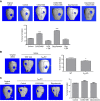
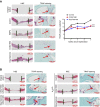
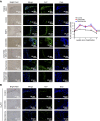
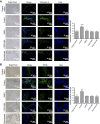
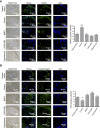
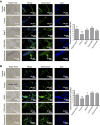
Similar articles
-
Adenosine A2A receptor (A2AR) activation triggers Akt signaling and enhances nuclear localization of β-catenin in osteoblasts.FASEB J. 2019 Jun;33(6):7555-7562. doi: 10.1096/fj.201900014R. Epub 2019 Mar 13. FASEB J. 2019. PMID: 30866652 Free PMC article.
-
Adenosine A2A receptor (A2AR) stimulation modulates expression of semaphorins 4D and 3A, regulators of bone homeostasis.FASEB J. 2018 Jul;32(7):3487-3501. doi: 10.1096/fj.201700217R. Epub 2018 Feb 2. FASEB J. 2018. PMID: 29394106 Free PMC article.
-
Ticagrelor regulates osteoblast and osteoclast function and promotes bone formation in vivo via an adenosine-dependent mechanism.FASEB J. 2016 Nov;30(11):3887-3900. doi: 10.1096/fj.201600616R. Epub 2016 Aug 10. FASEB J. 2016. PMID: 27511945 Free PMC article.
-
Translational Experimental Basis of Indirect Adenosine Receptor Agonist Stimulation for Bone Regeneration: A Review.Int J Mol Sci. 2024 Jun 1;25(11):6104. doi: 10.3390/ijms25116104. Int J Mol Sci. 2024. PMID: 38892291 Free PMC article. Review.
-
Allosteric Interactions between Adenosine A2A and Dopamine D2 Receptors in Heteromeric Complexes: Biochemical and Pharmacological Characteristics, and Opportunities for PET Imaging.Int J Mol Sci. 2021 Feb 9;22(4):1719. doi: 10.3390/ijms22041719. Int J Mol Sci. 2021. PMID: 33572077 Free PMC article. Review.
Cited by
-
Regulation of bone and cartilage by adenosine signaling.Purinergic Signal. 2016 Dec;12(4):583-593. doi: 10.1007/s11302-016-9527-2. Epub 2016 Jul 29. Purinergic Signal. 2016. PMID: 27473363 Free PMC article. Review.
-
Adenosine A2A receptor (A2AR) activation triggers Akt signaling and enhances nuclear localization of β-catenin in osteoblasts.FASEB J. 2019 Jun;33(6):7555-7562. doi: 10.1096/fj.201900014R. Epub 2019 Mar 13. FASEB J. 2019. PMID: 30866652 Free PMC article.
-
Bone Marrow Adipose Tissue and Skeletal Health.Curr Osteoporos Rep. 2018 Aug;16(4):434-442. doi: 10.1007/s11914-018-0451-y. Curr Osteoporos Rep. 2018. PMID: 29855795 Free PMC article. Review.
-
Small Molecules Enhance Scaffold-Based Bone Grafts via Purinergic Receptor Signaling in Stem Cells.Int J Mol Sci. 2018 Nov 14;19(11):3601. doi: 10.3390/ijms19113601. Int J Mol Sci. 2018. PMID: 30441872 Free PMC article. Review.
-
Regeneration of a Pediatric Alveolar Cleft Model Using Three-Dimensionally Printed Bioceramic Scaffolds and Osteogenic Agents: Comparison of Dipyridamole and rhBMP-2.Plast Reconstr Surg. 2019 Aug;144(2):358-370. doi: 10.1097/PRS.0000000000005840. Plast Reconstr Surg. 2019. PMID: 31348344 Free PMC article.
References
-
- Schindeler A., McDonald M. M., Bokko P., Little D. G. (2008) Bone remodeling during fracture repair: The cellular picture. Semin. Cell Dev. Biol. 19, 459–466 - PubMed
-
- Tsiridis E., Upadhyay N., Giannoudis P. (2007) Molecular aspects of fracture healing: which are the important molecules? Injury 38(Suppl 1), S11–S25 - PubMed
-
- Pape H. C., Marcucio R., Humphrey C., Colnot C., Knobe M., Harvey E. J. (2010) Trauma-induced inflammation and fracture healing. J. Orthop. Trauma 24, 522–525 - PubMed
-
- Riley E. H., Lane J. M., Urist M. R., Lyons K. M., Lieberman J. R. (1996) Bone morphogenetic protein-2: biology and applications. Clin. Orthop. Relat. Res. (324):39–46 - PubMed
-
- Boden S. D., Kang J., Sandhu H., Heller J. G. (2002) Use of recombinant human bone morphogenetic protein-2 to achieve posterolateral lumbar spine fusion in humans: a prospective, randomized clinical pilot trial: 2002 Volvo Award in clinical studies. Spine 27, 2662–2673 - PubMed
Publication types
MeSH terms
Substances
Grants and funding
- P30 CA016087/CA/NCI NIH HHS/United States
- UL1TR000038/TR/NCATS NIH HHS/United States
- HL100815/HL/NHLBI NIH HHS/United States
- R01 AR056672/AR/NIAMS NIH HHS/United States
- AR046121/AR/NIAMS NIH HHS/United States
- UL1 TR000038/TR/NCATS NIH HHS/United States
- UL1 TR001445/TR/NCATS NIH HHS/United States
- RC1 HL100815/HL/NHLBI NIH HHS/United States
- AR56672/AR/NIAMS NIH HHS/United States
- R01 AR054897/AR/NIAMS NIH HHS/United States
- P30 AR046121/AR/NIAMS NIH HHS/United States
- R56 AR056672/AR/NIAMS NIH HHS/United States
- 5-P30CA16087-310/CA/NCI NIH HHS/United States
- AR54897/AR/NIAMS NIH HHS/United States
LinkOut - more resources
Full Text Sources
Other Literature Sources
Molecular Biology Databases
Miscellaneous

